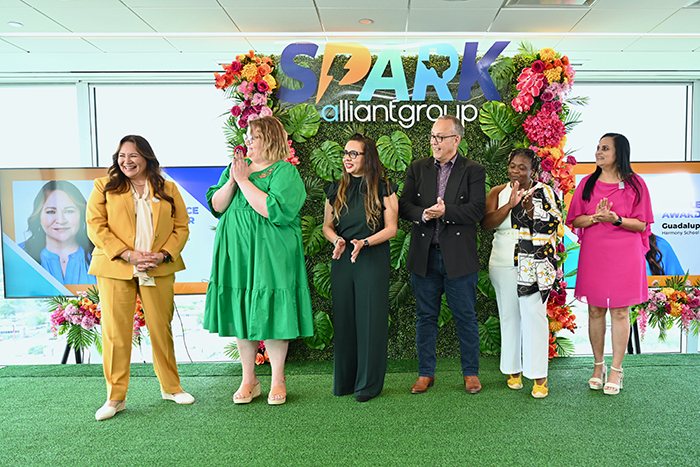[vc_row bg_type=”bg_color” bg_color_value=”#f5f5f5″ css=”.vc_custom_1618938311697{margin-top: 0px !important;margin-right: 0px !important;margin-bottom: 0px !important;margin-left: 0px !important;padding-right: 1em !important;padding-left: 1em !important;}”][vc_column][vc_column_text el_class=”article-info”]by Rick White, Former U.S. Congressman & CEO of Technet
September 24, 2021 | published in innotechtoday.com[/vc_column_text][/vc_column][/vc_row][vc_row][vc_column][vc_column_text]Each week we see concerning reports about the STEM skills gap continuing to widen in the United States. The good news is Congress and the Biden Administration have a unique chance to help move things in the right direction.
According to the U.S. Bureau of Labor, there were 1.4 million open tech vacancies in 2020 and only 400,000 computer science graduates. This is an alarming statistic, especially for a country that prides itself on being the home of Apple, Google, Microsoft, and Facebook. Furthermore, with the COVID-19 pandemic shuttering travel and borders, companies have no longer been able to rely as much on skilled workers from other countries — and the U.S. educational system has not caught up with the need for STEM-skilled workers.
Closing the STEM skills gap will be an important step in keeping America competitive with the rest of the world in innovation. According to Bloomberg’s Innovation Index, the United States has already fallen out of the top 10 most innovative countries.
In many countries, cultivating STEM skills is the primary way young people can improve their economic situation and raise their standard of living. Students in the United States, however, generally have more options, and graduate trends show they tend to choose different paths. The federal government can only do so much to push the STEM agenda, and government programs that don’t take the right approach can lack the necessary impact, waste money, and even be counterproductive.
But there are a few things the government can do that will make a difference. We need to invest in STEM education early and get younger generations excited for the opportunities that STEM can offer them. We also need to incentivize and reward businesses that are hiring and retaining those with STEM backgrounds. Now that Congress and the Administration are proposing a $2-trillion-plus infrastructure plan, we have a chance to make a real impact if STEM spending can be targeted towards these key action points.[/vc_column_text][vc_empty_space][/vc_column][/vc_row][vc_row][vc_column][vc_custom_heading text=”Starting Young” font_container=”tag:h3|text_align:left” use_theme_fonts=”yes”][vc_empty_space height=”5px”][vc_column_text]Many professionals choose their career based on childhood experience. If we want more STEM graduates, we need to plant the seed in the minds of younger generations before they graduate from high school. By the time they enter college, it may be too late.
In recent years, private groups and local organizations have developed promising STEM programs focused on elementary school children but making more federal funds available to them could increase their impact.
Unfortunately, the draft of the infrastructure plan focuses almost exclusively on higher education. It allocates $50 billion for STEM programs at historically black colleges and universities (HBCUs) and minority-serving institutions (MSIs), but little to K-12 education.
While spending on STEM programs in higher education is undoubtedly important, some of this funding could have a greater impact on younger students. For example, the Greater Houston Women’s Chamber of Commerce (GHWCC) has a program targeted at third-grade girls in underserved communities called STEAM Town USA. The afterschool program invites female engineers and scientists to volunteer with young girls and teach STEM skills through projects and activities.
High school programs like the National Robotics League (NRL), previously featured in Innovation & Tech Today, also provide practical hands-on experience in fun competitive environments. This program lets students build and program robots to expose them to STEM career opportunities in the manufacturing space, where a significant amount of private-sector research and development takes place. While the NRL goes beyond the classroom to get young people engaged, this program has consistently faced funding issues.
The administration says its goal for the infrastructure plan is to rebuild a more modern economy. If it can include a robust plan for enhancing STEM education in grade school and high school, it will have a much stronger chance of reaching this goal.[/vc_column_text][vc_empty_space][/vc_column][/vc_row][vc_row][vc_column][vc_custom_heading text=”Incentives for STEM Employers” font_container=”tag:h3|text_align:left” use_theme_fonts=”yes”][vc_empty_space height=”5px”][vc_column_text]We also need to incentivize the businesses that are hiring STEM graduates, so that a student’s hard work in getting a STEM education can pay off career-wise. The Biden administration has proposed tax increases on business to pay for the infrastructure bill, specifically raising the corporate tax rate to between 25% and 28%, increasing the global minimum tax on corporations to 21% and treating capital gains as ordinary income.
These tax hikes on companies hiring STEM graduates are counterproductive – in fact, they limit employment opportunities for those who have focused on the technical fields. Fortunately, there are existing incentives for most STEM employers, and the Biden tax plan needs to protect and, if possible, expand them.
As the infrastructure plan is implemented, the value of the R&D will only increase. The plan will not only improve our roads and bridges but also our broadband and cellular networks. IT consultants and digital transformation companies in particular, which hire large numbers of STEM graduates, will benefit from improved network infrastructure because of the work they do to elevate the technological capabilities of legacy American businesses.
The private sector also has a role to play. At a minimum, it needs to do a better job of taking advantage of the incentives the government already makes available to STEM employers. IT consultants and digital transformation companies in particular have a history of overlooking the R&D credit, and even those who do claim it are often significantly underclaiming.
Just as the federal government needs to put resources behind encouraging STEM students, they also need to be educating STEM employers about the incentives for which they are. In 2020, there was bipartisan support for the FORWARD Act, which would have created a budget to promote the credit, increase its value, and make on-job training a qualifying activity.
This is a time of great potential. If just a small percentage of spending in the infrastructure plan can be directed to a few key areas, and if the private sector can do a better job of using the incentives that the government makes available, we can make significant progress in narrowing the STEM skills gap.[/vc_column_text][/vc_column][/vc_row][vc_section][vc_row][vc_column][vc_separator][/vc_column][/vc_row][vc_row css_animation=”fadeInRight”][vc_column][vc_custom_heading text=”About the Author” use_theme_fonts=”yes” css=”.vc_custom_1621268389440{margin-bottom: 20px !important;}” el_class=”alt-h1″][/vc_column][vc_column width=”1/4″][vc_single_image image=”19223″][/vc_column][vc_column width=”3/4″][vc_column_text]
alliantgroup’s Rick White, has a wealth of experience in the software and technology space having served in the U.S. House of Representatives from 1995 to 1999 where he founded the Internet Caucus.
Representing the First District of Washington State as Congressman, White became well known as one of Congress’s most active legislators on high tech issues.
After serving in Congress, White transitioned to international law firm, Perkins Coie, where he worked in the firm’s Electronic Commerce and Internet Law practice section. He also served as the CEO of TechNet from 2001 to 2005 where he advocated for technology companies, then moved on to serve as founder and CEO of several tech-oriented startup companies. He is currently principal at the Woodbay Group, a consulting and investment firm in Seattle.
“I’m delighted to join the amazing people at alliantgroup,” said White. “I’ve committed my career to advocating on behalf of American businesses, particularly those in the tech world, so I’m more than excited to begin my journey with a firm whose primary mission is to help U.S. businesses succeed.”
In his role with alliantgroup, White has been using his experience with American tech businesses of all sizes for the strategic benefit of alliantgroup’s clients and CPA partners.
“Rick had a remarkable career as a Congressman who worked tirelessly on behalf of American businesses. His passion for those in the tech world and beyond is infectious. I absolutely cannot wait to see the great impact he will have as a member of the alliantgroup family,” said alliantgroup CEO Dhaval Jadav.
[/vc_column_text][/vc_column][/vc_row][vc_row][vc_column][vc_separator][/vc_column][/vc_row][/vc_section][vc_row][vc_column][vc_row_inner][vc_column_inner]
[/vc_column_inner][/vc_row_inner][/vc_column][/vc_row]

